Alistair Coombs outlines the freshest findings in the archaeo-scientific record on human evolution, and maps these with indigenous histories and star lore.
Note from the Editor:
Since the writing of this article, two pronouncements from within the academic realm that are relevant to what is written by the author here have been made. First, the official death of ‘Clovis First’ and the ascent of the maritime ‘Kelp Highway’ model for the peopling of the Americas marks mainstream recognition of the maritime capabilities of Palaeolithic peoples. Second, the replacement of the single ‘Out of Africa’ model of human evolution with the multiple migratory model has shifted the scope of academic enquiry into human origins from Africa to Australasia and Southeast Asia. Mainstream academia now officially recognises hominin migrations as complex webs of interbreeding and genetic introgression, with the initial migration of humans occurring—if Out of Africa—approximately 60,000 years earlier than previously thought. These findings are highly significant to our understanding of human origins, and augment the mapping of history with lore in this article in ways on which the reader is invited to ‘comment’ below.
A Door to the Past
Nuances arising out of contemporary research of the human genome begin to sound esoteric. Archives of ancient DNA teased out of fossils have revealed unknown subpopulations or “ghost tribes” of ancient human groups, species long vanished from the face of the Earth but who continue to unfold in us, their modern human descendants.[1] The discovery of substantial remnants of Denisovan DNA within Melanesian, indigenous Australian peoples, in addition to a more elusive dash detected within Native American populations, has contributed new initiatives to the sat nav of genetic migration and to a possible cultural memory following those same trails.[2]
Located in the winding river Anui Valley of the Altai range of Siberia, the Denisova Cave and its larger archaeological park borders a disputed territory between the highland steppe of Soloneshensky district and the more mountainous Altai Krai to the southeast. Set within this timeless land of waterfalls, bosky hills, grottos and mineshafts, Denisova Cave has yielded a treasury of stunning palaeoanthropological finds, in addition to a new species of human set to cause a scientific tsunami.
Known to indigenous peoples as Bear’s Rock (Ayu-Tash) after a shaman whose spirit animal was a particularly wrathful bear, Denisova Cave was renamed after an 18th century Christian mystic called Dionisiy/Denis, who took refuge there. Over the course of 2008–2016, an ornamental crystal bracelet, a marble ring, and a bone sewing needle radiocarbondated to 40,000 to 50,000 years old, were found in the cave.[3] The bracelet is set to be re-dated to a stupendous 60-70,000 years before present, which for finely crafted human jewellery (rather than weapons and tools) outreaches times deemed catalysts in the emergence of the modern mind by decamillennia.[4] Small hinges open big doors. In 2008, a fragment of a finger-bone of a juvenile female who lived approximately 41,000 years ago was excavated there.[5] The DNA extracted from this fossil belonged to an unknown human species, dubbed “X-woman”.
Like the Neanderthals’ naming after the Christian mystic Joseph Neander, the unknown Denisova hominin was christened after the cave-dwelling Dionisiy. Had they been named indigenously, they would have come out in translation as “bear people”.
Who were the Denisovans of the Altai?
The big bang of evolutionary anthropology, known as “Out of Africa,” has the earliest humans migrating out of the mother continent in two major waves. The first of these has relatives of Homo erectus originating in Africa about 2–3 million years ago and moving out of their home environment about 1.5 million years ago.[6] This early interloper allegedly went on to colonise Europe and swathes of Asia, leaving remnants whom survived until 30,000 to 40,000 years ago.
The second wave, it is believed, was comprised of a new, anatomically-evolved line of early humans who were more agile and equipped with a larger brain capacity. This new breed, supposedly incubating in Africa during the grip of an ice age, spread into Europe and Asia in parallel trails to its Homo erectus forebear. These Europe and Eurasia-bound hominins evolved into Neanderthals, while their Asian counterparts evolved into Denisovans. Homo sapiens are thought to have emerged 200,000 years ago after breaking off from Denisovan populations around 800,000 years ago, and from Neanderthals about 350,000 years ago.
This morass of human origins is subject to ongoing revision further down the family tree. Nevertheless, the mitochondrial DNA of a profile genetically distinct from Neanderthals and modern humans that was extracted from X-woman’s finger-bone, suggests that the Denisova hominins to which she belonged were a sister group to Neanderthals that had branched off as a distinct species about 400,000 years ago.
At present, forming distinctions between Neanderthals and Denisovans remains complex, given the sparse fossil evidence and lack of clarity in detecting hybrids or variations within populations rather than between them; the relationship between Homo heidelbergensis and Homo erectus on the one hand, and between Homo heidelbergensis and Homo neanderthalensis on the other, is, for example, ambiguous.
Broadly speaking, and for the sake of convenience, Denisovans were the “Asian” equivalents of “European” Neanderthals. At the genomic level, Denisovans have widened the puzzle of human behaviour and evolution from what was allowed by the conventional model only a few decades ago, as genetic analysis shows that a three-way interbreeding between Denisovans, Neanderthals and anatomically modern humans occurred. Although a few per cent of remnant DNA may sound like one or two chance sexual encounters, it indicates intergenerational breeding over hundreds of years.[7] Evidence for the intermittent human occupation of this Altai cave spans a period of about 282,000 years, with Neanderthals, Denisovans and modern humans inhabiting it at different times.
The incomplete bracelet and marble ring found in Denisova Cave would not appear to be an impressive legacy for a lost species, were they not of Denisovan manufacture; but the age of these objects reviews the degree of symbolically mediated behaviour and conceptual order thought possible for humans at that time. The bracelet is made of a dark green chlorite sourced 200 kilometres away from the cave and has a transparent quality when exposed to light. It shows techniques of drilling, grinding and polishing conventionally thought to belong to a later age, such as the Neolithic. Intriguingly, its damage occurred during its own time and became fixed with an unidentified adhesive. Considering its size and weight and that it included appendages that are no longer present, it is likely to have been worn on special, ceremonial occasions.
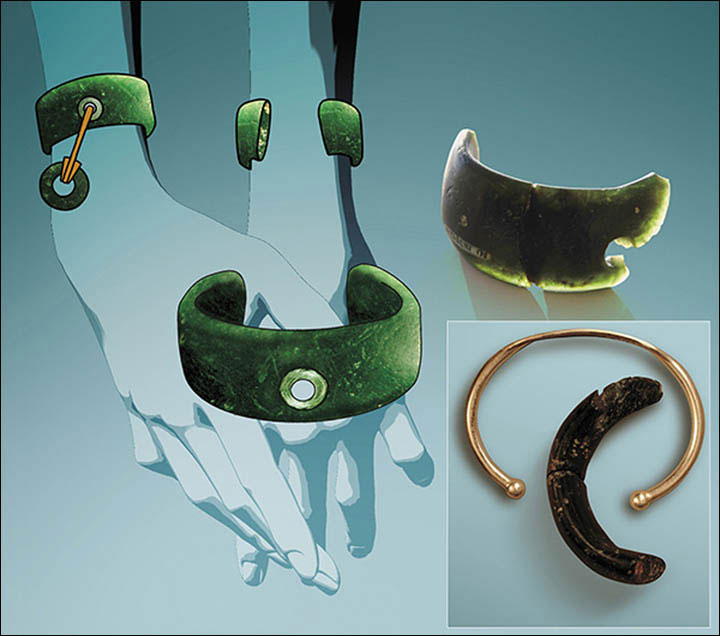
The manufacturing technology used in the bracelet is seen as being more typical of a later period, like the Neolithic era, which began approximately 12,000 years ago. Professor Mikhail Shunkov from the Russian Academy of Science has suggested that the long-extinct Denisovans were significantly more advanced than the anatomically modern humans and Neanderthals they coexisted with at the time. ©Anastasia Abdulmanova/The Siberian Times.

The marble ring found in the Denisova Cave displays sophisticated workmanship, and has been dated and ascribed to the Denisovans by academics. ©Alistair Coombs.
Migrations of the Denisovans
It is thought that the footloose tribes who once inhabited Denisova Cave diffused eastward to North America via the Bering Strait and southeastward to Melanesia and Australia via the Sunda Shelf. Both pathways can today be characterised as “lost continents,” as they are submerged below sea level. The time depth of human migration over these routes remains hotly debated and is calculated on past geological conditions and archaeological evidence, the latter of which has expanded alarmingly over the past few years. In both instances, new findings have recently emerged that push human habitation of these lands much further back than formerly suspected.
The peopling of North America was estimated to have occurred only 13,000 years ago, when Siberia and Alaska were connected by a continental land bridge named Beringia; it was thought that when seawater was locked up in glaciers during the Last Glacial Maximum 25,000 to 13,000 years ago, Beringia was exposed and traversable by foot, therefore allowing the continent to be inhabited for the first time. Beringia was, however, also passable from 50,000 to about 38,000 years ago, and for periods even earlier, but these dates are considered too early for human crossing, despite the pockets of evidence scattered across the Americas suggesting colonisation at an earlier time. Whichever is opted for, a recent discovery from the Bluefish Caves of Yukon, Canada, establishes the presence of human hunters in North America a significant 10,000 years earlier than the former, more accepted, date of 13,000 years ago.[8] This vital piece of evidence comes from the jawbone of a now-extinct Yukon horse, which shows clearly defined cut marks from when the horse was butchered using razor-sharp stone shards known as microliths. The butchery is not itself remarkable, but it indicates human habitation in North America prior to that of the Clovis people 24,000 years ago.
Furthermore, the April 2017 Cerutti Mastodon discovery has led to the question of whether it was anatomically modern humans who first entered the Americas, or an intrepid and technologically able group of Neanderthals or Denisovans.[9] Also, the fact that this news has come to us in the form of a mastodon is ironic. The year 1839 saw the publication of Behemoth: A Legend of the Mound Builders, a bestselling novel by American author Cornelius Matthews, imagining the first people of America and their earthworks. It features a fantastic mammoth-like beast, Behemoth, who destroys villages and entire armies. Like Behemoth, a terrene predecessor of Moby-Dick, the mammoth-like beast discovered in California threatens to decimate Clovis and other “firsts” of the not-so-virgin continent. Like the artefacts of Denisova Cave, the Behemoth found in California reminds us that we do not always see the complete picture; that prehistory is an ongoing disclosure.
As already mentioned, the passage of people to the southeast and eventually to Australia was paved by the mountainous grasslands of Sundaland—the lost continent of Southeast Asia—a landmass that joined the Malay Peninsula, Borneo, Java and Sumatra and bordered Australasia, before rising sea levels submerged it at the close of the last Ice Age. Seafaring migrations are generally, and unwisely, negated from this picture on the assumption that people from this period did not possess the know-how of watercraft and were unable to navigate large bodies of water. However, as with the case of North America, the dating of the original peopling of this second route is being extensively revised, since evidence for the inland occupation of Australia now appears to extend to 65,000 years ago, and perhaps a good deal earlier.[10]

Above: Aerial view of Beringia, taken by NASA. Below: The Beringia Land Bridge: animation of its progress from 21,000BC to present.
As previously mentioned, the Denisovan contribution to Australian and Melanesian ancestry is high, and though Denisovan ancestry is present in native Americans, it is of a lower level. Two scenarios have been devised to explain this complex issue. The first of these, as proposed by Qin and Stoneking, considers there to have been introgression from a population related to Denisovans into a modern human population that was ancestral to Native Americans, and Australian/Melanesians.[11] After the separation of Native Americans and Austral-Melanesian populations, the Native American Denisovan DNA became ‘diluted’ by other modern human ancestry to which Austral-Melanesian populations were unexposed. This admixture may have happened relatively close to Denisova Cave before migration to America occurred.
The second scenario proposed by Qin and Stoneking suggests that Denisovan introgression occurred in a population ancestral to Austral-Melanesians.[12] After the Denisovan admixture, but before Melanesians and Australians diverged, there was a back-migration from Oceania to the East Asian mainland, which would have contributed mixed Denisovan and Austral-Melanesian gene flow to the ancestors of present Native American populations. Though it is tempting to ascribe the higher level of Denisovan DNA found in South America to the displacement of earlier waves of migration, researchers are cautious not to speculate on the Native American-Denisovan results, as they are preliminary.[13] This is particularly advisable given the find published by the Cerutti Mastodon authors in Nature that strongly suggests the New World was entered around 100,000 years earlier than conventionally thought.
Besides the Denisovan ancestry found in modern descendants of these groups, another tracking device of their former migrations presents itself: one of an astronomic admixture that oversees Denisovan routes from Siberia to Melanesia, Australia and America to a remarkable degree, despite their geographical distances.
Star Women of the Steppe
Aboriginal peoples possessed navigational systems known as “songlines,” which are maps told as stories that allowed prehistoric peoples to navigate widely and communicate over long distances.[14] The extent of these songlines, also referred to as “dream paths,” may have been widespread in the distant past and characterised more as prehistoric “silk routes” of cultural and genetic exchange than untrodden one-way paths of direction. The late professor Klaus Schmidt of the German Archaeological Institute, former head of excavation at the Göbekli Tepe site, notes that:
The “songlines,” the “dream paths” of the Australian Aborigines may well illustrate – if we may reach back to such an anthropologic comparison – how possibly already in the Upper Mesopotamian Stone Age humans were able to orient themselves, to move and to communicate in the wide region beyond the actual geographic horizon. For the Aborigines, mythical stories are the guideline for their nomadic wanderings. Their dream paths are maps turned into song, descriptions of mythical events at consecutive places. They lead in all directions and cover the entire Australian continent with an orientation providing network. Each tribe inherits and bequeaths such a network of “songlines,” however no group is provided with a complete mythical line but only knows a part of these routes. This way, dream paths also function as a communicative network and a means of cultural exchange over long distances.[15]
The transgeographic reflection of the songline are the familiar star clusters that would accompany these human caravans into unfamiliar lands. Indeed, it would appear that ancient human wayfarers of these songlines were responsible for distributing a myth of the Pleiades star cluster from Siberian pastures to North America, Southeast Asia and beyond.
The fact that these stars are known as the Seven Sisters by natives of Siberia, North America and Australia cannot be considered an extraordinary coincidence. This exact designation, for example, is not consistent with the cultures of other times and places who personified this star group in very different ways. The gendering and numbering of the star cluster as seven women by these disparate peoples can be explained by there being a system of astronomical knowledge existent before the peopling of Australia and America. This correlation was noted by the Russian palaeohistorian Boris A. Frolov decades before the Denisovans were coined and discovered, and before the evidence that revises the peopling of these continents was published:
…mention of the American Indians’ observations of the Pleiades, which they called the Seven Sisters, involves an interesting question, for exactly the same name was traditionally used for the Pleiades by the aborigines of both Australia and Siberia, and a similar image of the Pleiades is found in the mythology of ancient Greece. While it seems quite impossible to see in this fact a mere coincidence, there is room for only one supposition: observation of the Pleiades and their denotation by the image of seven sisters pre-dated the populating of America and Australia. In other words, these observations and ideas must have been formed and transmitted by nonliterate Paleolithic hunters.[16]
Frolov’s proposal—that these stars were interpreted as seven sisters by the aborigines of diverse regions, implying that this identity pre-existed the peopling of North America and Australia—was not challenged by the scientific community. This is surprising, given that when Frolov articulated his observation over thirty-five years ago, the notion of a shared description of a star cluster—one that had originated with Palaeolithic inhabitants of Siberia before its dispersal across distanced lands—would have been rejected. The dominant conception of that time held that hunter-gatherers before 10,000 years ago were a brutish, “primitive” lot outcast from influencing the rise of civilisation. The only astronomical inclination that model would have allowed would have been a wild howling at the moon. Though such views are incompatible with the picture painted by new findings today, they linger in cultural lags of knowledge idols and institutionalised dogma for quite some time.
The most popular image of the Pleiades, scientifically designated M45, is of the seven daughters of Atlas being pursued across the heavens by the galactic hunter Orion. Importantly, however, and as previously mentioned, not all peoples of diverse times and places identified this cluster as seven sisters, or as women at all. The Pleiades has otherwise been conceptualised as a sieve/net (Baltic); a spider web (Anishinaabe); jewels/camels (Arabia); a marketplace (Aztec); snakes/bovines (ancient Egypt); a granary (Peru); and a rattlesnake tail (Maya), and more. Since the Seven Sisters’ identification as seven women is very gender and number specific, Frolov’s anomaly is noteworthy—and in light of the genetic trails of Denisovan migration, even more so.
Reconstructing an “original” Siberian tale of the Seven Sisters is fraught with difficulty for obvious reasons, given the enormous 65,000-year window of millennia, and the episodic movement of people across the Eurasian Steppe over this period. Notably, however, the Pleiades is depicted differently in Western Siberian areas, but remains identified as seven sisters in the Amur River area east of Lake Baikal,[17] and more significantly, by the Palaeo-Asiatic people who inhabit the extreme northeast of the Arctic Ocean’s Bering region, the former gateway to North America. Here, Orion has been a humpbacked hunter since his jealous wife (the Leo constellation) struck him for paying attention to the Pleiades women.[18] Though the specific, domestic violence detail of this Arctic version meets no known parallel in North America or Australia, it identifies Orion as a hunter and the Pleiades as women. This, along with other ethnographic examples, situates the Pleiades in a former Palaeolithic space narrative of a Cosmic Hunt in which Venus, Orion and Ursa Major feature pivotally as co–star groups,[19] fragments of which continue to play out in Siberia, North America and Australia today.
Robes of White Feathers
Charting the distribution of a Moon/lake myth across Southeast Asia and Melanesia, the geneticist Stephen Oppenheimer notes a remarkable similarity in the depiction of the Pleiades as seven feathered women who descended to Earth and bathed in a lake or lagoon at night.[20] These Asia–Pacific examples detail a waterside tryst involving a “peeping Tom” who stole a feather-clad garment belonging to one of the star women while they were bathing. Typically, a marriage between the man and the woman ensued before she eventually escaped and returned to heaven.
An account from Borneo tells of a man who lost his way at night and saw seven women bathing. He noosed one of the nymphs and took her home to be a wife for his son. The marriage went well until, in a temper, the son beat the woman with his jacket. Another jacket fell from heaven and the wife disappeared, leaving her child who became the ancestor of the tribe. Another account from Southeast Borneo has seven angelic beings known as the Santang goddesses sent down from heaven by the sky god on golden broomsticks as the teachers of men.
From the north coast of New Guinea is the story of a man named Nimuk, who spied seven women as they were removing their plumed dresses to bathe. In a lunar version of the tale from this region, the women were cassowaries who instead transformed into naked women when they removed their feathers to bathe—garments to which their genitals were attached. Nimuk stole one of the downy skirts and found that he could use it to hunt at night by placing it in a bamboo tube. His brother misused the torch and the lunar light escaped from the bamboo back to the sky by climbing a breadfruit tree.
In a version from Vanuatu, the god Tagaro had winged-women sent to Earth from Heaven. As they swam in the sea, their wings were hidden by a group of men. In this instance, only one of the women made it back to the sky.
The Austronesian Yabobs of Madang, Papua New Guinea, credit their pot-making skills to the teaching of Honpain, a beautiful woman from the Pleiades. She came to Earth in a canoe and lived secretly with a Yabob man, but returned to the stars following a family dispute.
Oppenheimer, who argues that Pacific cultures fertilised those of the ancient Near East or, rather, those in exodus from the retreating shorelines of Sundaland, draws a compelling parallel between these Melanesian Seven Sister tales and the story of Moses meeting the seven daughters of Midian by the water, in addition to the seven amphibious sages of the Mediterranean.[21]
Several other Melanesian tales of female educators from the stars combine themes of the Moon and the seven days of the lunar week. From Java is the story of the moon goddess Nawang Wulan, which contains similarities to the myth of ancient Greek goddesses being caught without their clothes on. It tells of the moon goddess who descended to Earth in a cloak of swan feathers, which she discarded upon landing on the waters of a lake. As she bathed, her cloak was stolen by a cunning man. With no means of returning to the sky, she married him and they had a daughter. The stranded goddess generated rice for the household with a magic pot, which the man was forbidden from looking inside of; but overcome with curiosity, he looked inside to see only one grain of rice. The woman lost her powers but regained her cloak and remained with her husband and daughter during the daylight hours, before returning to the sky at night.
Java and Bali share a comparable story of seven heavenly bathing women, one of whose cloaks was stolen by a man and hidden in a rice granary.
An echo is also heard in Japan with the story of a fisherman who found a robe of white feathers on the shore. After he picked it up, a shining female emerged from the sea, begging him to give back the robe so she could return to the Moon.
Another account from Borneo, connoting menstruation, tells of a virgin who descended from heaven into water in the form of a mangrove. A floating tree turned into a man who married the virgin on a rocky island, a union from which seven torrents of blood from the goddess flowed, begetting more virgins and creatures of omen.
Though some Melanesian stories mix themes involving the number seven more generally—seven being an important number within Pacific megalithic cultures, which appears to reference the lunar week and the mysteries of woman, fertility and fecundity—the character of the Pleiades as seven women, who are pursued and have the ability to transform into birds, remains succinct.
Clan of the Cave Bear
Known indigenously as Mateo Tipi, “Bear’s House” or “Bear Tower,” the Devil’s Tower (to which under Christian settler influence its name was changed) is a natural rock formation part of the Black Hills that soars 1,267 feet (386 metres) above the Great Plains of Wyoming, USA. It was by no accident that this unusual-looking monolith, which in 1906 became the first declared national monument of the United States, featured prominently in Steven Spielberg’s 1977 sci-fi classic of extraterrestrial visitation “Close Encounters of the Third Kind”.
In addition to gracing the packaging of Starry Night software, the atmosphere Mateo Tipi radiates is alien and unfamiliar. Long regarded as a spiritual site and cosmic axis mundi of the landscape, it is said to house entrances to subterranean passages leading to caves used for the incubation of dreams. Perhaps the most famous mythic event to transpire at Mateo Tipi is indeed one which appears to have shaped its name—that of the seven star girls who were chased up its summit by a pack of grizzlies.
So the tale goes that before moving south for winter, the migratory Kiowa tribe settled by a stream. One day, a group of girls left camp and went playing in the woods, catching the attention of some large bears. The girls ran back to camp with the bears close behind. As the pack closed in on them, the girls leapt onto a platform of rock three feet high and prayed to the Great Spirit to save them. The rock began to grow, and rose higher and higher into the air, while the bears made jumps at the girls by clawing at it, lending the fluted tower the appearance of having been scratched. Rising ever higher, the rock pushed the seven girls into the Pleiades, where they remained.
The site is of importance to the seven tribes of the Sioux nation as it marks an encounter between their ancestors and a cosmic being known as White Buffalo Calf Woman, an emissary of a supreme Wakan Tanka or Great Mystery. A Sioux legend also tells of a warrior who went there with a buffalo skull to pray to the spirit of the site. After worshipping for two days, he found himself at the top of the towering rock. Troubled as to how he would ever get down from its high peak, he fell asleep and found himself again at the base, but standing at the entrance to the secret cave of a giant bear. Though the Sioux trace their origin to the Seven Sisters and modern medicine men speak of star people coming to Earth from this cluster,[22] they are not always identified as women.
The Arapaho revere both Mateo Tipi and the Pleiades, although their version has the cluster as five brothers and two sisters.
For Algonkian hunter-gatherers, the Pleiades is the Hole in the Sky and the supreme source of shamanistic power. They reproduce the cluster on the ground in the Conjurers Lodge, a conical, wigwam-like structure made of seven wooden poles stuck in the earth which allows night-time access to the opening in the sky.[23]
Incidentally, comets enter the picture, which appear to indicate a later chronological layering, especially since Jobes and Jobes, the recorders of the following two accounts, suggest that the falling to earth of a Taurid meteor might be echoed in them. According to the Onondagas, an old man in a white feather dress with hair that dazzled like polished silver came upon a clan of Indians in a wood while they were hunting. The children of the hunters danced and the old man warned them not to, lest evil fall upon them. All but one rose to the sky and became the Pleiades, the other becoming a falling star.
A Cherokee version of the same tale has seven boys engaged in a feather-dance accompanied by the sound of an ahuli, an ancient drum. They rose into the sky and became seven stars. One of them created a fiery trail, which fell to Earth; where it landed, a palm tree grew. The tree transformed into an old man, who stayed on Earth for seven years and warned of imminent floods, before vanishing.[24]
Another example is an Inuit legend that tells that in early times, a great bear threatened the people and was chased into the sky by a pack of dogs. These dogs still pursue the bear through the heavens as the Pleiades.
Clearly, themes of a Palaeolithic cosmic chase multiply and modify, with victim and perpetrator occasionally switching roles, though often keeping their “original” identity, as this account of Noah’s Flood illustrates:
Now the deluge was caused by the male waters from the sky meeting the female waters which issued forth from the ground. The holes in the sky by which the upper waters escaped were made by God when he removed stars out of the constellation of the Pleiades; and in order to stop this torrent of rain, God had afterwards to bung up the two holes with a couple of stars borrowed from the constellation of the Bear. That is why the Bear runs after the Pleiades to this day; she wants her children back, but she will never get them till after the Last Day.[25]
In the northern hemisphere, Ursa Major’s “prowling” motion about the pole could be perceived as activating the sky and churning heaven, though this constellation could hardly be said to resemble a bear. Indeed, when European settlers arrived in North America, they were puzzled as to why natives identified this constellation with a bear reflecting their home stellar maps.[26] Like the Seven Sisters, an orally-spread, hunter-gatherer tradition of Middle-to-Upper Palaeolithic antiquity accounts for the pervasive identity of this constellation as a bear, and pertains to bear legends rather than independent observation.
Going extinct about 24,000 years ago, the cave bear (Ursus spelaeus) was a beast of monstrous magnificence, much larger than its present-day descendants. This Ice Age giant, whose fossils inspired European dragon lore of the Middle Ages, could rear to about three metres in height. Bear cults and the veneration of bear skulls with a possible astronomical component can be traced to early periods. We recall the indigenous name of Denisova Cave as Bear’s Rock and the labyrinthian dream-cave interior of Mateo Tipi’s namesake as Bear’s House or Bear Tower. Adding to these centres is a site in the Swiss Alps known as Drachenloch or Dragon’s Lair. Over the course of excavations from 1917 to 1923, this high-altitude cave was discovered to house a Neanderthal bear altar dated to approximately 75,000 years before present. Inside a limestone chest or coffin were the skulls of seven bears with their muzzles orientated toward the opening of the cave.[27] The late British psychologist Stan Gooch, who noted this find, would have found interest in the recent Denisovan discoveries, since he had long argued for a Neanderthal or Palaeolithic legacy of astronomy, spiritual culture and esoteric wisdom.
Surprisingly, the Drachenloch find is not isolated; similar ritual remains such as seven cave bear skulls arranged in a circle were excavated in 1946 in Furtins Cave, Saône-et-Loire, France.[28] Other Palaeolithic examples of bear ritual and of skulls uttering a prehistoric cosmology come from the post-mortem modification of bear skulls evidenced by deliberate cut marks, ochre colouring, and the unusual arrangement in cave spaces of these ceremonial relics.[29]
An example less archaic than these is the bear head atop the hitherto anomalous “totem pole” found at Göbekli Tepe. It is noteworthy that the Göbekli Tepe structures have been ethnographically compared to the cedar plank houses of the northwest coast of America, where totem poles are believed to have originated.[30] The Ainu people of the Russian Far East also held ceremonies in which the head of a sacrificed bear was placed on top of a spirit pole, to send the beast back to its heavenly home.[31] The degree to which we might correlate these scattered poles and skulls to a circumpolar bear cult connected to the Ursa Major constellation is a matter of interpretation.
Star myths that contain remnants of a Cosmic Hunt, such as the American tales of the Seven Sisters and their celestial chasers, likely stem from very deep, archaic sources of observation, however. Indeed, they are derivative of the vision-quested skies of extinct human species. Though the first National Monument of the United States, Mateo Tipi may have been one of the earliest sacred monuments of the Americas.
Seven Sisters of the Dreamtime
Different groups of aboriginal people across Australia use various names and descriptions in their storying of the Pleiades. The particulars of the myth in which they are packaged nevertheless remain consistent, despite the fact that the people who observe them occupy diverse environments, such as deserts and the shores of lagoons. According to indigenous author Munya Andrews from the Kimberley region, the Adnyamathanha of South Australia know the Seven Sisters as the Magara.[32] The Bundjalung people of northern New South Wales name the sisters Meamai or Maimai. In Western Australia, the Walmadjeri call them Gungaguranggara. To the Kulin of Victoria they are known as the Karagurk – seven women who carried fire at the end of their digging sticks.
As the Magara, the Seven Sisters were pursued by dog-men, known as the Wanjin, from the Orion constellation. It is said that when the Magara were hiding from them, the Wanjin lit fires to scorch their wings to ensure an easy capture. The pursuit transferred to the heavens and continues to play out as the Pleiades reaching the safety of the western horizon before Orion. In a comparable myth, Manbuk (Orion) becomes enamoured of one of the seven women. In an event that somewhat echoes the feathered robes of the Melanesian stories, she shed her shiny skin, as if an heirloom of her cosmic ancestry, when the hunter attempted to catch her.
Pursuers can also come from the opposite side of the sky. In one legend, the Seven Sisters were trailed by their father Dunia, a sexual predator who was transformed into a crocodilian monster identified with Antares in the Scorpio constellation. Another version tells of a hunter named Karambil, who fell in love with one of the sisters. Due to a tribal code, he was prevented from having sexual relations with the star woman, so he abducted her. She eventually escaped captivity and Karambil became the star Aldebaran in the Taurus constellation, stalking the sisters across the heavens.
In the tale of the Wati-Kutjara or the “two brothers” of the western territories, the Moon joined the hunt. Kidilli, the Moon, was making the star women bleed before being apprehended by the Wati-Kutjara, the constellation of Gemini, who informed him not to chase but to marry along proper lines. Besides the menses element, the meaning here is obscure. [33]
Another version has two of the Seven Sisters abducted in a plot involving the theft of their digging sticks by Wurrunna, an old man. Wurrunna had gone out in search of game in a strange territory and encountered the otherworldly women by their campfire. The two sisters escaped upon expanding trees back to heaven but shone less brightly than their companions, as Wurrunna’s embrace had melted their icicles or celestial skin. As a wandering hunter who pursued the star women, Wurrunna most closely matches Orion of Greek legend. Indeed, Gooch, who notes this remarkable similarity between Aboriginal Australia and classical Greece, was convinced that Wurrunna was a Neanderthal predecessor to Orion.[34]
Songlines Connecting Continents?
Establishing prehistoric links between North America and Australia from a Siberian starting point—at timescales we are considering—presents obstacles in the absence of known writing systems dating anywhere close to these periods. But this does not prevent the preservation of cultural memory in other forms. Though sparse fossil evidence inhibits the answering of the question of whether it was Denisovans or their Aboriginal descendants who were the first trailblazers of America and Australia, the shared knowledge of the Pleiades as seven women between these groups presents a compelling anomaly. As proposed by Frolov, there has been a diffusion of archaic myth rather than separate origins of it, which in this instance reflects a baseline of migration trails and genetic markers so that it is possible, to some extent, to match a “songline” to “bloodline”.
Tribal traditions that speak of contact with ancestral beings from this cluster aside, there is nothing that suggests these stars to be women, and their enumeration of seven is not perceived by all. From a conventional perspective, a 65,000-year period for transportable stories of the stars may appear astounding, far out of sight and before anything we could relate to as modern humans. The typical argument against such an early transfer of knowledge would be to say that specific stars and constellations could not possibly have retained their identity for such long periods. This, however, would neglect the fact that up until the Younger Dryas event, hunter-gatherer cultures had persisted for millions of years. Given the plummeting time-depth of Australian and American colonisation, and that these early civilisations remained intact within continents that became sealed by oceans until European contact, such a timescale is arguably entirely reasonable.
References
1. See for example: EurekAlert!, “In saliva, clues to a ‘ghost’ species of ancient human.” 21 July 2017.
2. Science Daily, “Ancient Denisovan DNA excavated in modern Pacific Islanders.” 17 March 2016.
3. Siberian Times, “World’s oldest needle found in Siberian cave that stitches together human history.” 23 August 2016.
4. Siberian Times, “Could this stunning bracelet be 65,000 to 70,000 years old?” 2 August 2017.
5. Krause, K. et al., “The complete mitochondrial DNA genome of an unknown hominin from southern Siberia” in Nature, Volume 464, 24 March 2010, pp. 894–897.
6. Hublin, J.J, et al., “New fossils from Jebel Irhoud, Morocco and the pan-African origin of Homo sapiens” in Nature, Volume 546, 8 June 2017, pp. 289-292.
7. A number of other fossils containing this DNA have been discovered since. Slon, V. et al., “A fourth Denisovan individual” in Science Advances Volume 3, Number 7, 7 July 2017.
8. Bourgeon, L. et al., “Earliest Human Presence in North America Dated to the Last Glacial Maximum” in PLOS One, 6 January 2017.
9. Holen, S R. et al., “A 130,000-year-old archaeological site in southern California, USA” in Nature, Volume 544, 27 April 2017, pp. 479-483.
10. Clarkson C. & Jacobs Z., “Human occupation of northern Australia by 65,000 years ago” in Nature, Volume 547, 20 July 2017, pp. 306-310.
11. Qin, P & Stoneking, M. “Denisovan Ancestry in East Eurasian and Native American Populations” in Molecular Biology and Evolution, Volume 32, Issue 10, 1 October 2015, pp. 2665–2674.
12. ibid.
13. ibid.
14. Lawlor, R. Voices of the First Day: Awakening in the Aboriginal Dreamtime. Rochester, Vt.: Inner Traditions, 1991, p. 48.
15. Schmidt, K. Göbekli Tepe: A Stone Age Sanctuary in South-Eastern Anatolia. Berlin: ex oriente, 2012 p.190.
16. Frolov, B.A., “On Astronomy in the Stone Age” in Current Anthropology, 1981 Oct; 22(5):585.
17. Berezkin, Y. “The Pleiades as Openings, The Milky Way as The Path of Birds, and The Girl on The Moon: Cultural Links Across Northern Eurasia” in Archaeology, Ethnology & Anthropology of Eurasia, 37 (4), 2009, p. 12.
18. Berezkin, Y. “The Cosmic Hunt: Variants of a Siberian-North American myth” in Archaeology, Ethnology and Anthropology of Eurasia (2), no.22, 2005, p. 90.
19. Hayden, B. And Villeneuve, S. “Astronomy in the Upper Palaeolithic?” in Cambridge Archaeological Journal, Vol. 21, No. 3, 2011 p. 341.
20. Oppenheimer, S. Eden in the East: The Drowned Continent of Southeast Asia. London: Weidenfeld & Nicolson, 1998, pp. 341-50.
21. Oppenheimer, pp. 347-49.
22. Boylan, R, PhD. “Native Elders Reveal Centuries of Extraterrestrial Contact Lore.” 1996.
23. Conway, T. “The Conjurer’s Lodge.” Earth and Sky: Visions of the Cosmos in Native American Folklore. R. Williamson & C. Farrer (eds). Albuquerque: University of New Mexico Press, 1992 pp. 236–59. See also the use of seven yew sticks reflecting the shape of the Big Dipper portion of the Ursa Major constellation found at a Mesolithic/early Holocene shaman sanctuary excavated in Poland.
24. Jobes, G & Jobes, J. Outer Space: Myths, Name Meanings, Calendars. New York: Scarecrow Press, 1964 p. 343.
25. de Santillana, G & von Dechend, H. Hamlet’s Mill. Boston: Nonpareil Books, 2007, p 386, quoting Sir James Frazer, Folk-Lore in the Old Testament, 1918, vol. 1, pp. 143f.
26. Shepard, P & Sanders, B. “Celebrations of the Bear” in The North American Review, Vol. 270, No. 3 (1985), p. 21.
27. Gooch, S. Cities of Dreams: When Women Ruled the Earth. London: Aulis Books, 1995, pp. 100-101. See also, The Dream Culture of the Neanderthals: Guardians of the Ancient Wisdom. Rochester, Vt.: Inner Traditions, 2006.
28. Wunn, I. “Cave bear worship in the Palaeolithic” in Cadernos Lab. Xeolóxico de Laxe Coruña. 2001. Vol. 26, p. 458.
29. Germonpré, M. and Hämäläinen, R. “Fossil Bear Bones in the Belgian Upper Paleolithic: The Possibility of a Proto Bear-Ceremonialism” in Arctic Anthropology, Vol. 44, No. 2, 2007 pp. 1-30.
30. Banning, E. “So Fair a House: Göbekli Tepe and the Identification of Temples in the Pre-Pottery Neolithic of the Near East” in Current Anthropology, Vol. 52, No. 5, 2011 p. 626.
31. Campbell, J. The Masks of God: Primitive Mythology. London: Souvenir Press, 2011 p. 343.
32. Andrews, M. The Seven Sisters of the Pleiades. Melbourne: Spinifex Press, 2004, ch. 3.
33. Oppenheimer, op cit., pp. 348-49.
34. Gooch, 1995, op. cit., ch. 4.
35. Sykes, B W. “Why archaeology needs to come out of the cave and into the digital age.” The Guardian, December 21st, 2016.






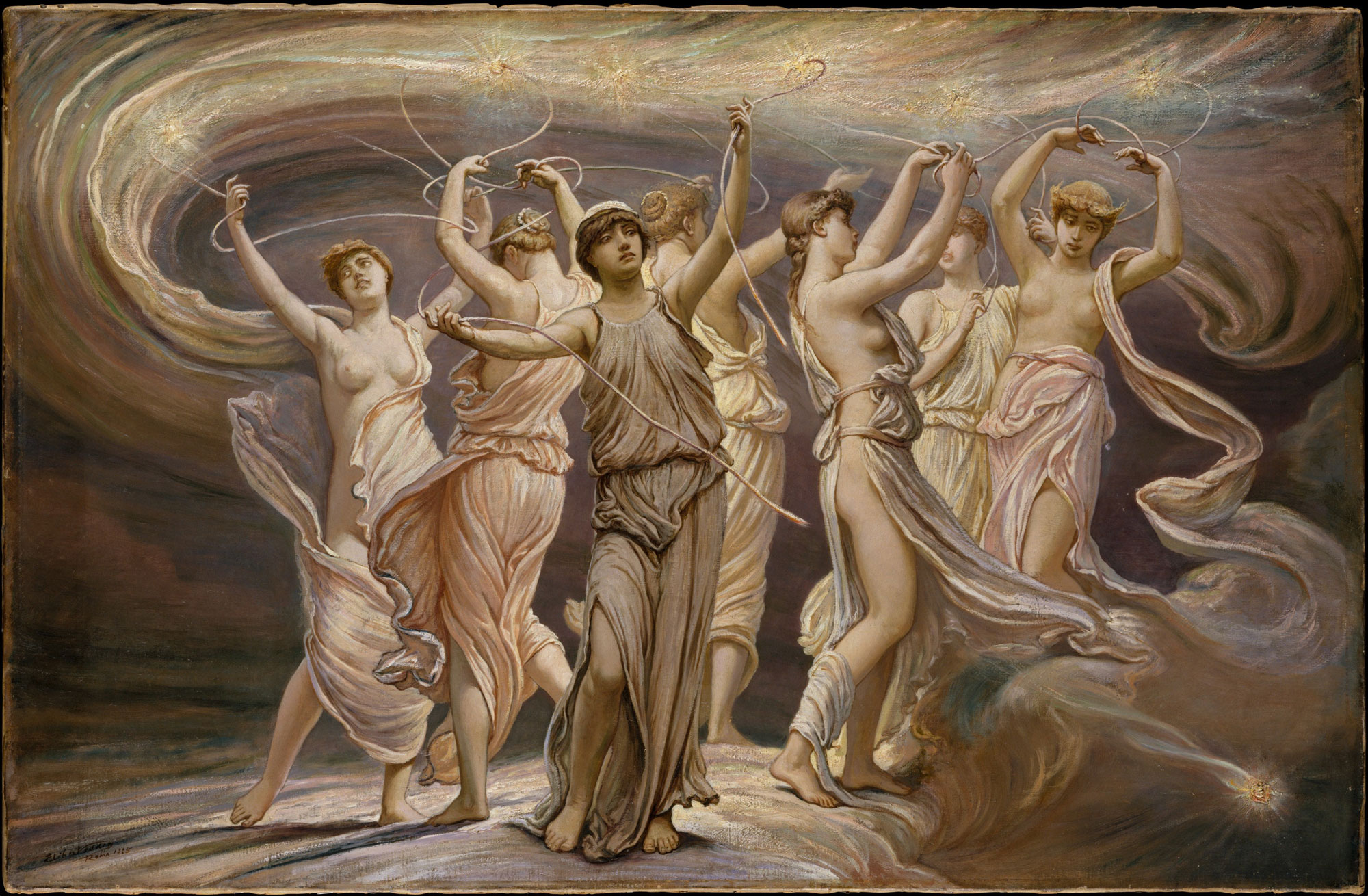
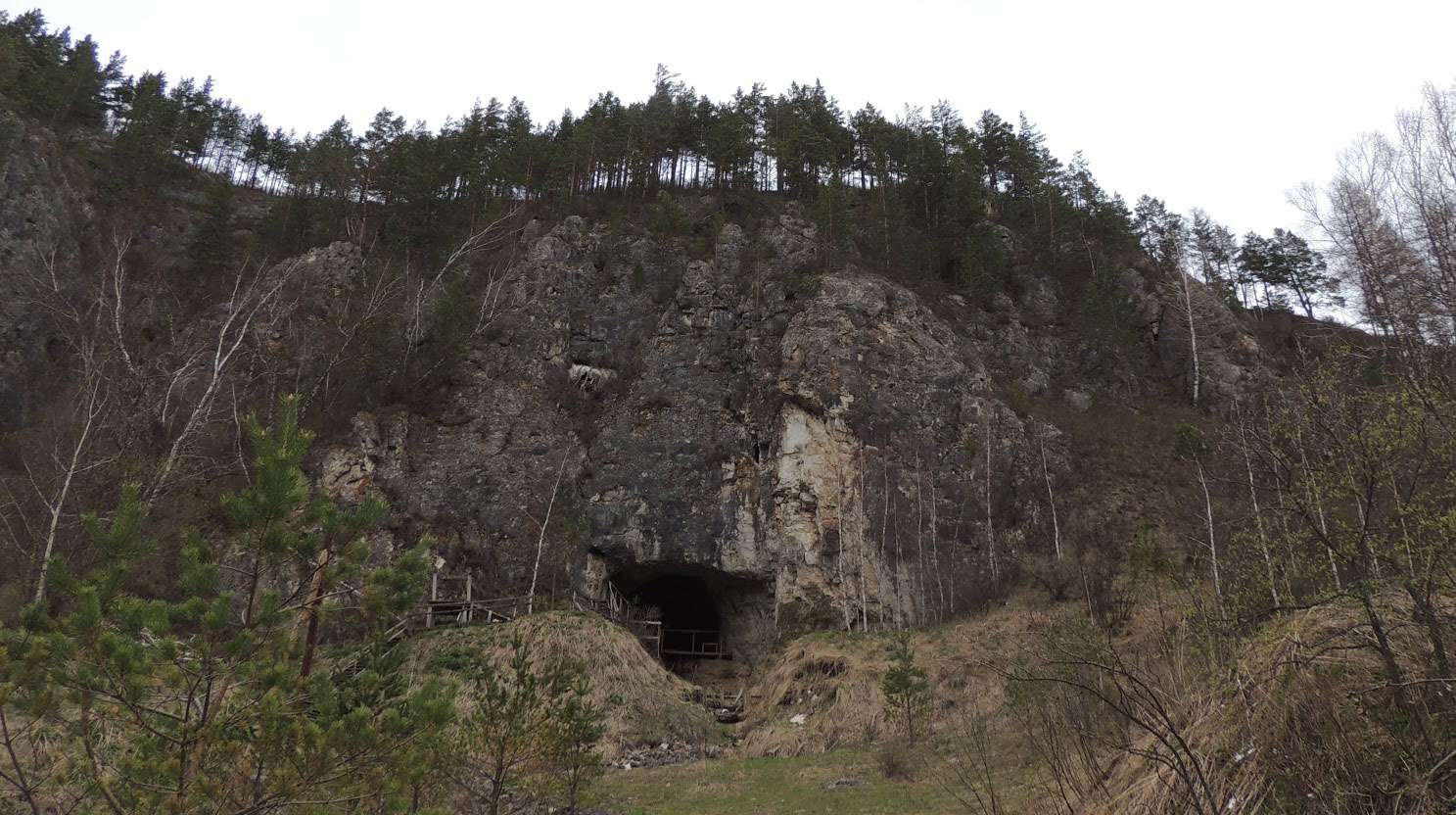
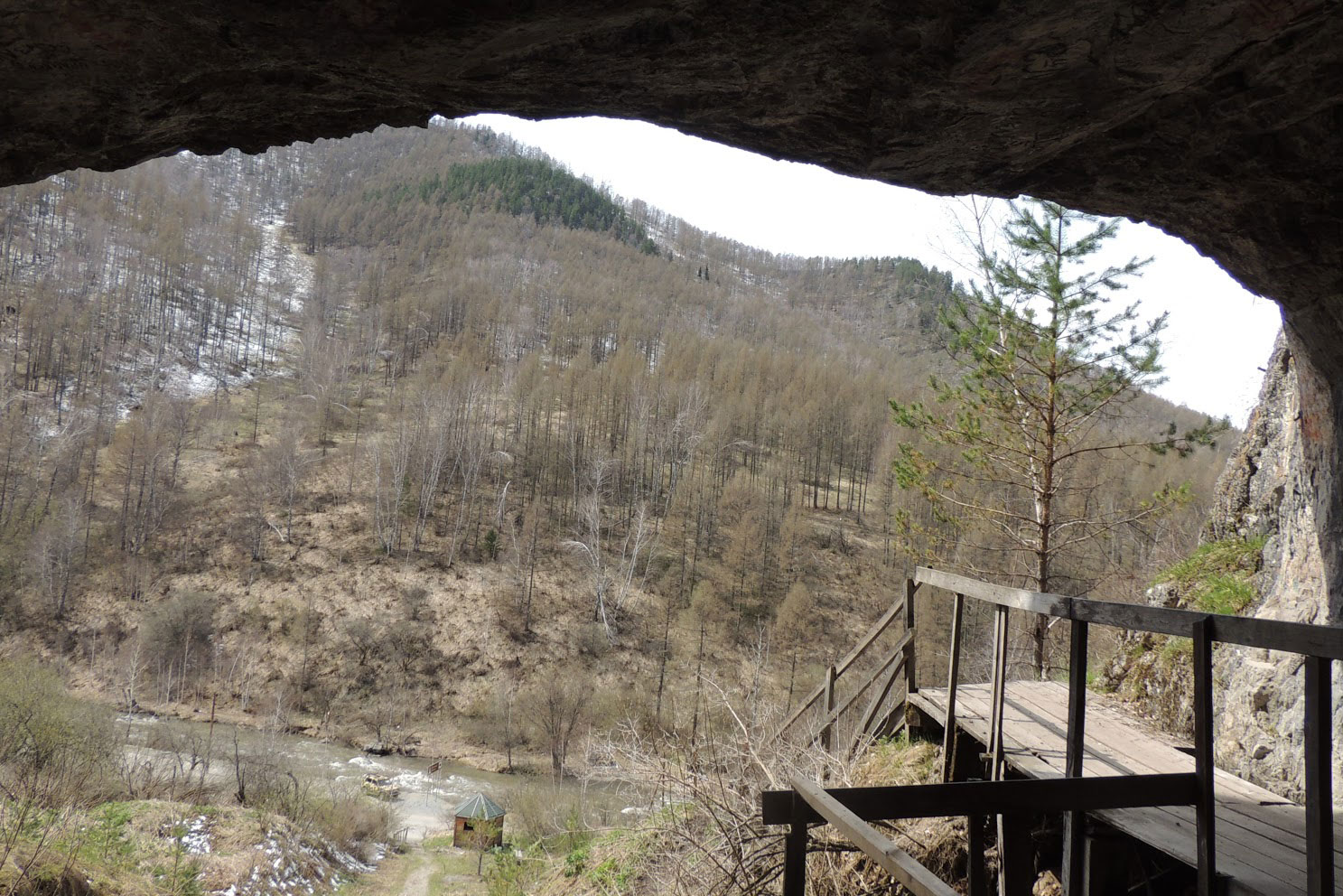
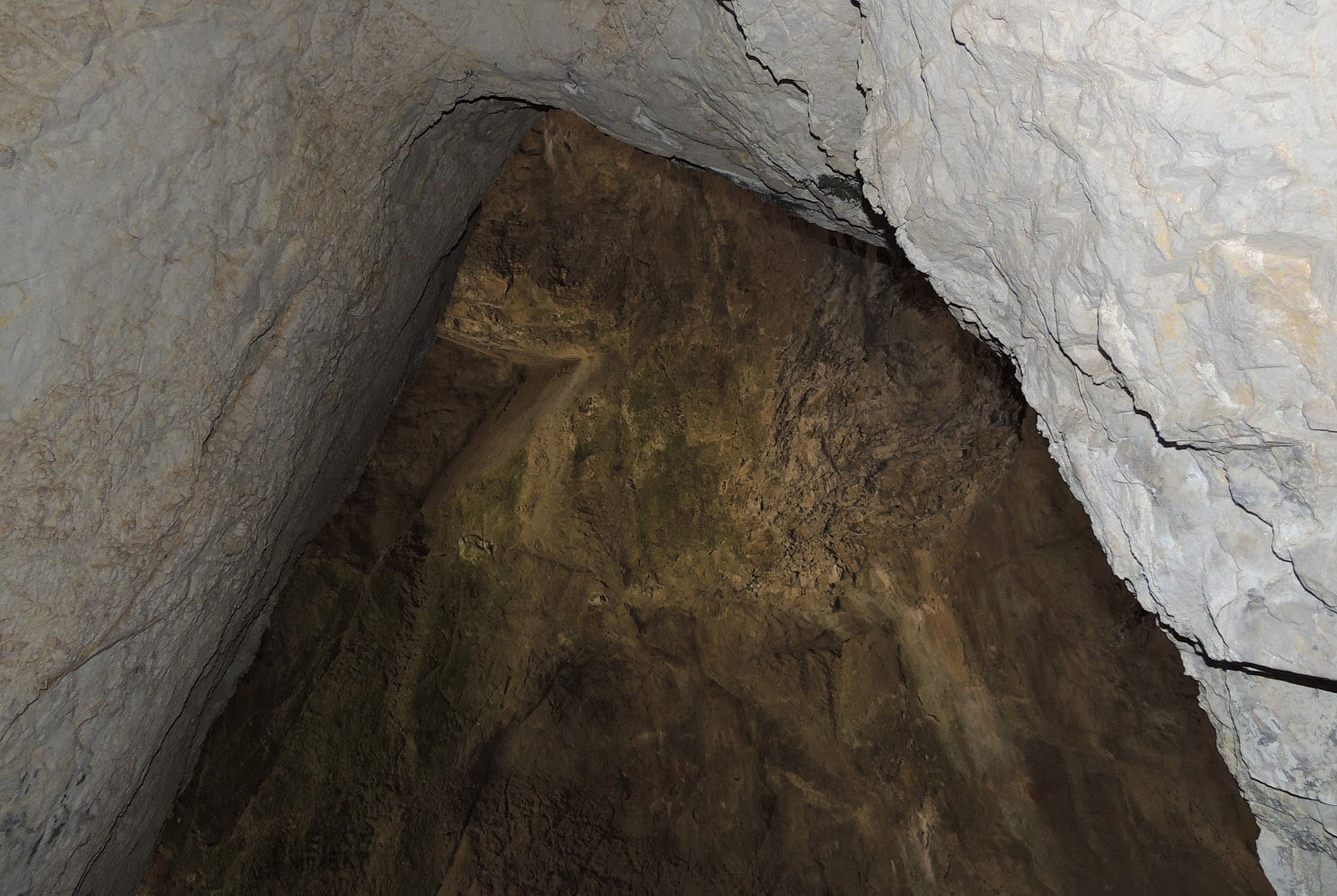




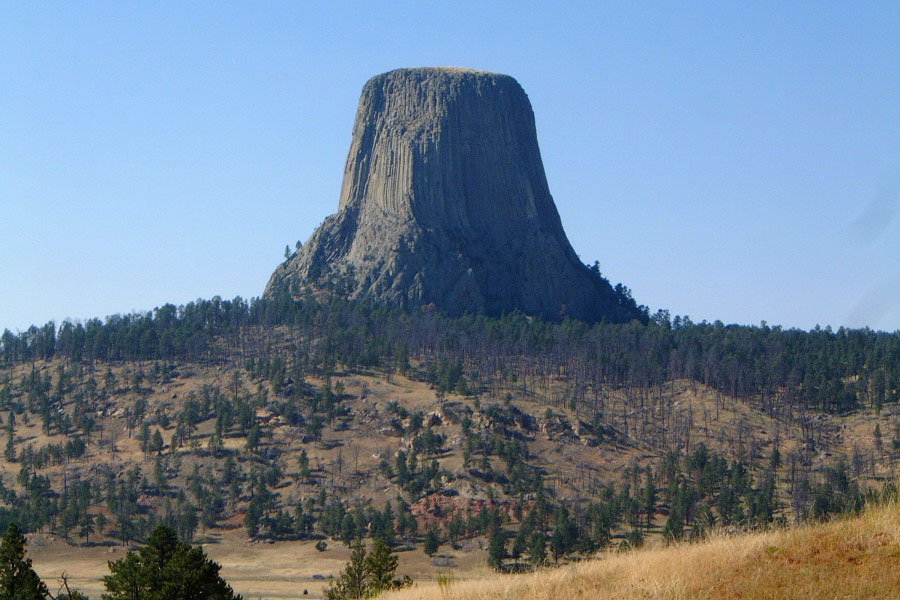
See a recent article about the late hominids discovered near Johannesburg in South Africa here;
https://stoneprintjournal.wordpress.com/2017/07/10/homo-naledi-bones-rattle-evolution/
See my comment on the archaeo astronomy in your article, on the Inner Space page here;
http://grahamhancock.com/phorum/read.php?4,1128408,1128408#msg-1128408
.